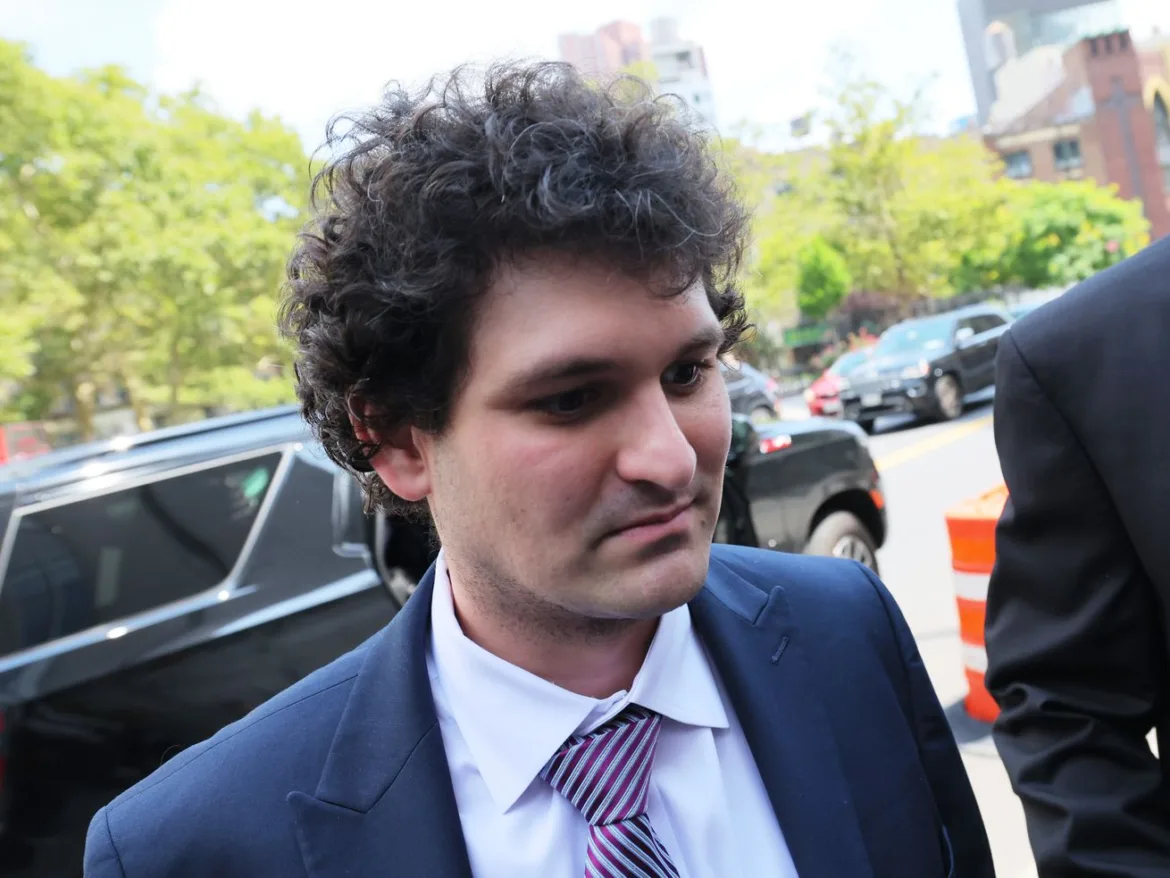SBF vs. Bernie Madoff, Elizabeth Holmes, Allen Stanford, and Jeffrey Skilling.
Sam Bankman-Fried, the founder of the defunct crypto exchange FTX who was convicted on fraud and conspiracy charges last year, will be sentenced Thursday in New York court.
Prosecutors are seeking a 40- to 50-year sentence for his role in defrauding investors of billions of dollars. Yes, billions. That sentence would still be well below the maximum statutory sentence of 115 years, but his attorneys are arguing that it should be no longer than six-and-a-half years and that he also should not be ordered to pay any restitution or forfeit any assets.
His trio of co-conspirators Caroline Ellison, Gary Wang, and Nishad Singh — all members of SBF’s inner circle and executives at FTX or Alameda Research (its sister hedge fund also co-founded by Bankman-Fried) — cooperated with prosecutors to testify against Bankman-Fried at trial. They may face minimal, if any, prison time.
The judge in the case, US District Judge Lewis Kaplan, is likely to consider a few factors in determining Bankman-Fried’s sentence, including his age, the scale of the losses, and the government’s interest in deterring him and anyone else from committing similar crimes. That last point is a big one, said Jennifer Taub, a professor at Western New England University School of Law focusing on white-collar crime.
“The white, wealthy, and well-connected tend to wiggle their way out of facing the criminal consequences for their predatory behavior,” she said. “It’s high time that we actually hold white-collar criminals accountable.”
While Bankman-Fried’s lawyers have sought to downplay the harm caused by the scheme that led to FTX and Alameda’s downfall, prosecutors have likened his crimes to that of Bernie Madoff, the infamous Wall Street financier who orchestrated history’s largest Ponzi scheme.
“No scheme to defraud since Madoff can be compared to this one in terms of its size, scope, and amount of loss,” prosecutors argued in court filings.
So how does SBF’s possible sentence likely stack up against other big fraud cases this century?
Let’s take a look.
But first, a recap of what went down with FTX
SBF’s fall from grace was excruciatingly abrupt.
As my colleague Sean Illing wrote, “Before he was charged, SBF was widely seen as a benevolent genius, some kind of digital-era Robin Hood, who was going to make obscene amounts of money and then give it all away to worthy causes.” (Disclosure: In August 2022, Bankman-Fried’s philanthropic family foundation, Building a Stronger Future, awarded Vox’s Future Perfect a grant for a 2023 reporting project. That project was canceled.)
To back up: In 2019, Bankman-Fried founded FTX, at one point the third largest crypto exchange, and rode a crypto boom for a few years. Through the next few years, he went around espousing a particular version of effective altruism — a utilitarian movement that describes itself as “using evidence and reason to figure out how to benefit others as much as possible” — that entailed earning as much as possible to purportedly give away as much as possible. He also grew his political influence, becoming one of President Joe Biden’s biggest donors in 2020.
But in 2022, a balance sheet for Alameda was leaked that implied his whole crypto empire was built on double-dipping.
Without getting too in the weeds, essentially the balance sheet showed that Alameda had large holdings of FTX’s proprietary digital currency FTT, which had questionable value at a time when crypto prices were spiraling downward. If those digital tokens’ value plummeted, FTX’s financial solvency would be severely in doubt.
Investors withdrew their holdings in FTT in large numbers, revealing an $8 billion gap in what FTX could pay out and what it owed customers. It then became apparent that FTX had transferred customer funds to Alameda and that the two firms were far more entangled than Bankman-Fried had previously disclosed or that was allowed under their terms of service. Both FTX and Alameda declared bankruptcy that fall.
Prosecutors alleged that Bankman-Fried’s failure to disclose the transfers, FTX’s relationship with Alameda, FTX’s exposure to Alameda’s risky FTT holdings, and the use of commingled funds to make “undisclosed venture investments, lavish real estate purchases, and large political donations” was in fact fraud.
In November, after a much-watched trial filled with jarring testimony — including from SBF himself — he was convicted of all seven criminal counts against him. Those included two counts of wire fraud, two counts of conspiracy to commit wire fraud, conspiracy to commit securities fraud, conspiracy to commit commodities fraud, and conspiracy to commit money laundering.
Now, he’s facing potentially decades in prison.
The factors that could influence his sentencing
Bankman-Fried is only 32 years old, which means he would likely still be alive (and able to commit another crime) by the time he gets out of prison if the sentence is on the shorter end of the spectrum. He’s proved to have “gone up to the line over and over again,” as Kaplan said when revoking his bail ahead of trial, accusing him of trying to influence key witnesses.
But he also has a lot of life left to live, this is his first offense, and his lawyers cite his neurodiversity and charity work as potential mitigating factors, which may make the court more lenient.
Kaplan is “going to have to figure out whether he thinks there is an opportunity for this guy to be rehabilitated,” Taub said. “I think it’s a big deal, even though you’re trying to deter him from hurting other people, you’re trying to deter other young crypto people.”
Prosecutors argue that the losses in the case are enormous, conservatively estimated at $8 billion for FTX customers, $1.7 billion for FTX investors, and $1.3 billion for Alameda lenders. Those total customer losses represent the amount by which their account balances exceeded the amount of assets that FTX had available to disburse to them when it went bankrupt in November 2022.
However, Ellen Podgor, a professor at Stetson University focused on white-collar crime, said that the fact that Bankman-Fried’s fraud could cause such harm represented a regulatory failure and that the sentence sought by prosecutors is therefore too high.
“The thing that bothers me the most about this case is that if [Bankman-Fried] had been caught earlier, the fraud would not be as great and the sentence lower,” she said. “I question whether a fraud that goes on for a longer period of time, because it was not stopped by a government agency, should place the defendant in receiving a higher sentence.”
And Bankman-Fried’s lawyers say that the customer losses should actually be calculated as “zero.” The Financial Times reported that customers are slated to receive up to two-fifths more than the value of their holdings on the day FTX went bankrupt due in part to the recent crypto surge.
However, prosecutors argue that any potential recovery of funds after FTX filed for bankruptcy shouldn’t be considered in the sentencing decision. In other fraud cases, the government was able to recover a large portion of victims’ funds — in large part because of the justice system. In Madoff’s case, victims have been repaid 91 percent of their losses and there are ongoing efforts to make them whole; he still received what was a life sentence and died in prison.
“The question is whether Judge Kaplan is going to consider the fact that the victims will are going to receive all their money back,” Taub said. “Will that affect the sentencing? I don’t think it’s going to be persuasive.”
How SBF compares to this century’s biggest convicted fraudsters
Bernie Madoff
Prosecutors argue that the scale of Bankman-Fried’s fraud has no recent parallel but Madoff’s.
Madoff orchestrated the biggest Ponzi scheme in history, with losses totaling $64.8 billion. He was convicted in 2008 after confessing to his two sons who reported him to law enforcement, and sentenced to 150 years in prison.
He was once a respected name on Wall Street who embraced computing innovations in trading. But he lured in, at first, friends and acquaintances from Manhattan and Long Island to invest in his fund and later, large institutional investors, universities, and major charities. He used funds from new investors to pay “returns” to existing ones, and he did so undetected for decades.
He promised steady returns, rather than big payouts. And that’s what he appeared to deliver through a recession in the early ’90s, the dot-com bust in the late ’90s, and after the September 11 terrorist attacks in 2001. The global financial crisis in 2008, however, brought about his undoing. Institutional investors withdrew hundreds of millions from his fund and he didn’t have enough new investors to pay them out.
He died at age 82 in 2021 from kidney disease in a prison hospital. He was denied early release when he was given 18 months to live. At that point, he had served 11 years of his sentence.
Elizabeth Holmes
Elizabeth Holmes may not have been sentenced for nearly as long as Madoff, but the downfall of her failed blood testing company Theranos is just as notorious.
Holmes founded Theranos in 2003 after dropping out of Stanford University. She claimed that the company had developed technology that could perform a wide range of blood tests by collecting blood through just a finger prick. She signed on to a partnership with Walgreens to bring the technology to their stores.
At one point, Theranos was valued at $9 billion, making Holmes, given her 50 percent stake in the company, one of only a few female billionaires in Silicon Valley. She was on the covers of Fortune, Forbes, and Inc. She drew in investors including media mogul Rupert Murdoch and Oracle executive chairman and founder Larry Ellison, as well as credentialed board members including former US Secretaries of State Henry Kissinger and George Shultz.
But the device, known as the Edison, never worked as described, as was uncovered by a Wall Street Journal investigation.
In November 2022, she was convicted of four counts of defrauding investors and later sentenced to 11 years and three months in prison. However, her sentence has since been quietly reduced by about two years for good behavior.
Allen Stanford
Allen Stanford was sentenced to 110 years in prison in 2012 for orchestrating a $7 billion Ponzi scheme through his financial firm, Stanford Financial Group.
Once a billionaire who managed $50 billion in customer funds, he sold fraudulent certificates of deposit — which allows consumers to deposit funds for a specific period of time and at an interest rate usually higher than normal savings accounts — from his offshore bank in Antigua to some 50,000 investors. Many of them were retirees seeking safe investments.
He used the proceeds to subsidize a lavish lifestyle in Antigua, whose economy suffered in the wake of his prosecution given that he had become its largest employer.
As of 2019, his victims had not been able to recover nearly as much of their funds as Madoff’s.
Jeffrey Skilling
Jeffrey Skilling was the CEO of Enron Corporation, once one of the largest energy companies worldwide, during its collapse in 2001 in what became one of the most infamous cases of corporate fraud in history.
Enron’s downfall came about when it came to light that the company had covered up major debts and losses through complex accounting techniques and entities that were not reported on its balance sheets. This inflated Enron’s perceived financial health and therefore its stock price. Skilling had a hand in promoting these accounting practices and became a symbol of Enron’s corporate greed.
The stock price dropped after the revelations, causing investors to incur billions in losses, and the company filed for bankruptcy in December 2001. Thousands of employees lost their jobs. It led to the passage of a landmark federal law in 2002 aimed at improving corporate governance and financial reporting standards.
In 2006, Skilling was convicted of 19 criminal counts including fraud, conspiracy, and insider trading. Though several other executives were also prosecuted, he received one of the longest sentences: 24 years in prison. However, he only ended up serving 12 after demonstrating good behavior; after his release, he went to work for an energy startup, Veld Applied Analytics, which is developing tools to monitor oil and gas assets.



